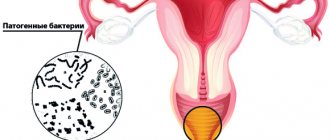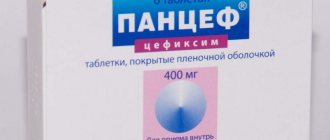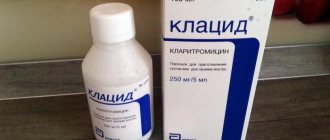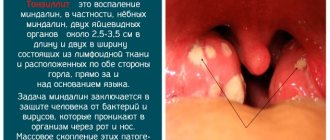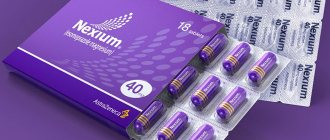ACC, 200 mg, granules for oral solution, 3 g, 20 pcs.
ACC® 200
ACC®
For effervescent tablets, granules for the preparation of solution for oral administration (orange)
In the absence of other prescriptions, it is recommended to adhere to the following dosages.
Adults and teenagers over 14 years of age
— 1 table. effervescent 200 mg or 1 pack. ACC® granules 200 mg for oral solution (orange) 2-3 times a day (400-600 mg acetylcysteine per day).
Children aged 6 to 14 years
- 1 table. effervescent 200 mg or 1/2 pack. ACC® granules 200 mg for the preparation of a solution for oral administration (orange) 3 times a day, or 1 pack. ACC® granules 200 mg for the preparation of an oral solution (orange) 2 times a day (300–400 mg acetylcysteine per day).
Children aged 2 to 5 years:
1/2 table effervescent 200 mg or 1/2 pack. ACC® granules 200 mg for oral solution (orange) 2-3 times a day (200-300 mg acetylcysteine per day).
Cystic fibrosis
For patients with cystic fibrosis and a body weight of more than 30 kg, if necessary, the dose can be increased to 800 mg of acetylcysteine per day.
Children over 6 years of age
It is recommended to take 1 tablet. effervescent 200 mg or 1 pack. ACC® granules 200 mg for the preparation of a solution for oral administration (orange) 3 times a day (600 mg acetylcysteine per day).
Children aged 2 to 6 years
- 1/2 table. effervescent 200 mg or 1/2 pack. ACC® granules 200 mg for the preparation of a solution for oral administration (orange) 4 times a day (400 mg acetylcysteine per day).
Effervescent tablets should be dissolved in one glass of water and taken after meals. The tablets should be taken immediately after dissolution; in exceptional cases, the ready-to-use solution can be left for 2 hours.
Granules for oral solution (orange) should be dissolved in water, juice or iced tea and taken after meals.
Additional fluid intake enhances the mucolytic effect of the drug. For short-term colds, the duration of use is 5–7 days. For chronic bronchitis and cystic fibrosis, the drug should be taken for a longer period of time to achieve a preventive effect against infections.
Instructions for patients with diabetes mellitus
1 effervescent tablet 200 mg corresponds to 0.006 XE.
1 pack granules 200 mg for the preparation of solution for oral administration (orange) corresponds to 0.23 XE.
ACC®
For granules for the preparation of oral solution
In the absence of other prescriptions, it is recommended to adhere to the following dosages.
Adults and adolescents over 14 years of age are recommended to take 1 pack. ACC® granules for oral solution, 200 mg, 2–3 times a day (400–600 mg acetylcysteine per day).
Children aged 6 to 14 years are recommended to take 1 pack. ACC® granules for oral solution, 200 mg, 2 times a day (400 mg acetylcysteine).
Cautions:
Due to the high content of the active substance (200 mg of acetylcysteine per sachet), the drug should not be taken by children under 6 years of age. In this case, it is recommended to use the drug ACC® in other dosage forms with a lower acetylcysteine content.
The drug should be taken after meals.
The granules are dissolved with stirring in 1 glass of hot water and drunk as hot as possible. If necessary, it is possible to leave the prepared solution for 3 hours.
Cystic fibrosis
For patients with cystic fibrosis and a body weight of more than 30 kg, if necessary, the dose can be increased to 800 mg of acetylcysteine per day.
Children over 6 years of age are recommended to take 1 pack 3 times a day. ACC® granules for oral solution, 200 mg (600 mg acetylcysteine per day).
Additional fluid intake enhances the mucolytic effect of the drug.
For short-term colds, the duration of use is 5–7 days. For chronic bronchitis and cystic fibrosis, the drug should be taken for a longer period of time to achieve a preventive effect against infections.
Instructions for patients with diabetes mellitus
1 pack granules for the preparation of solution for oral administration, 200 mg, weighing 3 g corresponds to 0.21 XE.
Instructions for use ACC® 200 (ACC® 200)
During the use of acetylcysteine, severe skin reactions such as Stevens-Johnson syndrome and Lyell's syndrome have been observed in very rare cases. If changes occur in the skin and mucous membranes, you should immediately stop taking acetylcysteine and seek medical help.
Caution should be exercised when treating acetylcysteine in patients suffering from bronchial asthma and patients with a history of gastric or duodenal ulcers, hemoptysis, pulmonary hemorrhage, patients with esophageal varices, phenylketonuria, diseases of the adrenal glands, renal and/or liver failure.
Caution should also be exercised in patients with histamine intolerance. In such patients, long-term therapeutic courses should be avoided, since ACC® 200 affects histamine metabolism and may cause intolerance symptoms (for example, headache, rhinitis, itching).
1 effervescent tablet contains 5.7 mmol (131 mg) sodium. This should be taken into account when using the drug in patients on a controlled sodium diet (low sodium/low salt).
When dissolving the drug, it is necessary to avoid its contact with metals, rubber, oxygen, and easily oxidized substances.
Impact on the ability to drive vehicles and operate machinery
There is no evidence of a negative effect on the ability to drive vehicles or operate machinery.
Results of preclinical safety studies
In animal studies, acute toxicity was low.
When studying chronic toxicity in studies on various animal species (rats, dogs) lasting up to 1 year, no pathological changes were revealed.
Acetylcysteine is not considered to have a mutagenic effect. In vitro studies showed negative results.
No studies have been conducted on the oncogenic potential of acetylcysteine.
No congenital malformations were observed in embryotoxicity studies in rabbits and rats. Fertility, perinatal and postnatal toxicity studies showed negative results.
Acetylcysteine crosses the placental barrier in rats and is found in amniotic fluid. The concentration of the L-cysteine metabolite in the placenta and fetal tissues exceeds the concentration in the maternal blood plasma for 8 hours after administration of the drug.
ACC 100
ACC 100 (acetylcysteine) is a drug that thins mucus and facilitates its evacuation from the lungs. Used for diseases of the respiratory tract, accompanied by the formation of thick sputum with the inclusion of mucus and pus (inflammation of the bronchial mucosa of an acute and chronic nature, inflammation of the trachea of bacterial or viral etiology, pneumonia, bronchiectasis, bronchial asthma, collapse of the lung lobe due to blockage of the bronchi with phlegm, inflammation of the sinuses sinuses, cystic fibrosis), preparation for instrumental diagnostic studies, removal of mucus from the respiratory tract after surgery and trauma. ACC is one of the most well-studied and effective mucolytics. The chemical formula of the drug is the amino acid cysteine, supplemented with a sulfhydryl group. Unlike many other mucolytics, ACC 100 has an antioxidant effect. This property was passed on to the drug “inherited” from the substance of which it is a precursor - a key link in the antioxidant protection of glutathione. The latter performs a protective function in the respiratory system and prevents the destructive effects of aggressive free radicals that appear en masse at the site of inflammation. ACC 100 also has an antitoxic effect. Pathogenic bacteria produce toxins that disrupt tissue pH and contribute to the progression of inflammation. The massive formation of toxins causes oxidative stress, which depletes the content of SH groups in tissues. Being a donor of SH groups, ACC 100 prevents the development of oxidative stress, thereby exhibiting detoxification activity, which is closely related to the antioxidant properties of the drug. ACC 100 is a specific antidote for paracetamol intoxication.
The drug can also be used as an antidote for poisoning with dichloroethane, the poison of the toadstool. Acetylcysteine inhibits the process of programmed cell death and slows down cellular aging. The drug prevents the attachment of pathogenic bacteria to the mucous membrane of the respiratory tract, increasing the effectiveness of treatment. Thus, ACC 100 has a complex effect, which ensures its high antitussive effectiveness. The drug has undergone a series of clinical studies that have confirmed its favorable safety profile, allowing the drug to be used in pediatric practice, incl. in patients under 2 years of age. When taken orally, ACC 100 is well absorbed from the gastrointestinal tract. Most of the active substance undergoes metabolic transformations by microsomal liver enzymes, which reduces the bioavailability of the drug. The duration of the medication course is determined individually. For ulcerative-erosive lesions of the stomach and duodenum (including those previously suffered), spasmodic bronchitis, liver or kidney diseases, hypersensitivity to histamine, tortuosity and saccular dilatation of the esophageal veins, adrenal insufficiency, hypertension, ACC 100 is taken with special care caution. When using ACC 100 by persons suffering from bronchial asthma, sputum drainage should be arranged. Between taking ACC 100 and some antibacterial drugs (tetracycline, amphotericin B), it is necessary to take a 1-2 hour break. Combined use of ACC 100 with central antitussive drugs may cause accumulation of sputum in the respiratory tract due to inhibition of the cough reflex.
pharmachologic effect
Mucolytic drug. Acetylcysteine is a derivative of the amino acid cysteine. It has a mucolytic effect, facilitates the discharge of sputum due to a direct effect on the rheological properties of sputum. The action is due to the ability to break the disulfide bonds of mucopolysaccharide chains and cause depolymerization of sputum mucoproteins, which leads to a decrease in sputum viscosity. The drug remains active in the presence of purulent sputum.
It has an antioxidant effect due to the ability of its reactive sulfhydryl groups (SH groups) to bind to oxidative radicals and thus neutralize them.
In addition, acetylcysteine promotes the synthesis of glutathione, an important component of the antioxidant system and chemical detoxification of the body. The antioxidant effect of acetylcysteine increases the protection of cells from the damaging effects of free radical oxidation, which is characteristic of an intense inflammatory reaction.
With the prophylactic use of acetylcysteine, there is a decrease in the frequency and severity of exacerbations in patients with chronic bronchitis and cystic fibrosis.
ACC 200
Active substance:
Acetylcysteine*
Pharmgroup:
Secretolytics and stimulants of motor function of the respiratory tract
Average price in pharmacies
| Name | Manufacturer | average price |
| ACC 0.02/ml 100ml syrup for children | SANDOZ | 273.00 |
| ACC 0.2 n20 pack 3.0 por d/d/orally /orange/ | SANDOZ | 127.00 |
| ACC 100 n20 spike tabl | SANDOZ | 239.00 |
| ACC active 0.6 n10 sachet for oral administration | SANDOZ | 173.00 |
| Azts-long 600 n10 spike tab | SANDOZ | 377.00 |
Analogs for the active substance:Acestine Acetylcysteine Acetylcysteine SEDICO Acetylcysteine solution for inhalation 20% Acetylcysteine injection solution 10% ACC ACC 100 ACC Long Mukobene Mucomist Mukonex N-AC-ratiopharm Fluimucil Exomyuk 200 |

